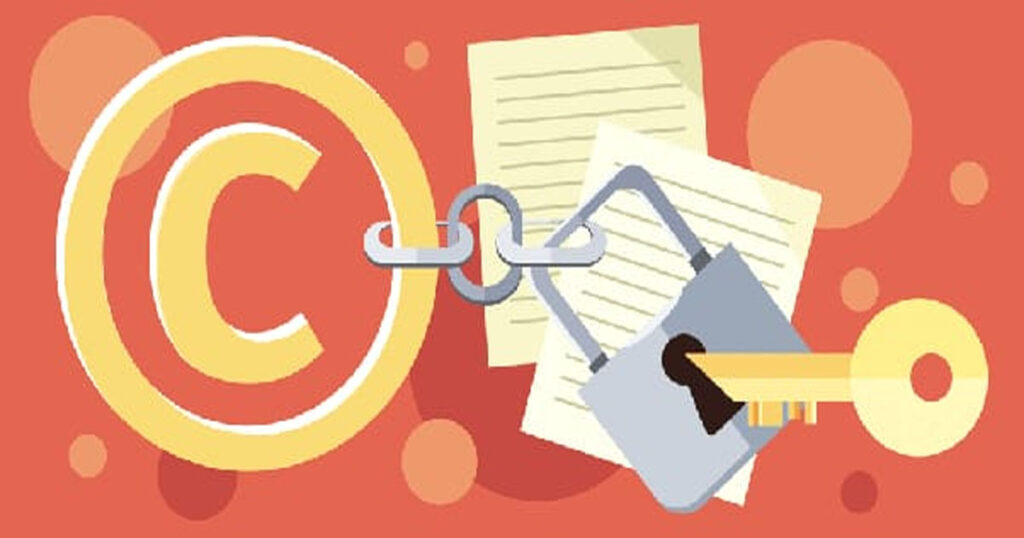Dealing with Copyright issues: How to Protect yourContent

Protecting intellectual property is crucial for content creators, as unauthorized use can be damaging. Engage with audiences, educate them on Copyright issues
Content creation has become a fundamental part of personal and professional endeavours. Regardless of whether you are a – writer, artist, musician, or entrepreneur – intellectual property is an asset to protect. However, it is as easy as falling off a log to infringe and plagiarize your content. Dealing with copyright issues and safeguarding your work has become a critical concern for content creators of all kinds.
What is Copyright Infringement?
When a copyright creation is copied, used and shared without the copyright owner’s permission, it is known as copyright infringement. In social media, it’s critical to protect your content, as others can easily use it to gain views and likes for Instagram. Copyright is a form of intellectual property protection that ensures your right over your creation. These rights are the power to reproduce, distribute, display, or perform copyrighted work and create similar works based on the original. Copyright can occur unintentionally, so consider and convey your thoughts to the opposite party before acting.
How to Protect Your Content from Piracy?
Although copyright infringement can occur unintentionally, taking proactive steps to protect your content from piracy is important. Below are some preventive methods to prevent content piracy.
1. Use copyright notices: Place clear and visible copyright notices on your work.
2. Implement watermarks or digital signatures: Watermarks or digital signatures on your content can warn against unauthorized use and help you and your followers identify pirated content.
3. Pursue licensing agreements: If you plan to share your content with others or allow them to use it, consider implementing agreements that clearly outline use restrictions and violations and mention credits to your work.
4. Educate your audience: Educate your audience about copyright laws and the importance of respecting intellectual property rights. Ask them to report if they witness misappropriate use of your content.
5. Send takedown notices: If you discover unauthorized use of your creations, send a notice or Digital Millennium Copyright Act (DMCA) to either take down or give you credit for your content.
Content Detection Tools
In addition to preventive measures and enforcement strategies, various third-party services and tools are available to help protect digital content.
Content protection services: Software such as Digimarc, Custos, and Locklizard provide content protection services for your digital files, making them secure from copying or unauthorized access and helping you monitor usage.
Digital rights management (DRM) solutions: Adobe, Microsoft, Apple, and other companies provide solutions that enable you to decide how your digital content can be accessed, duplicated, or distributed, often through encryption and licensing.
Watermarking tools: Services that include Digimarc and Idrscripts let you watermark images, videos, or any document you intend to protect, which will be invisible to the naked eye, with details about the source and ownership in case of theft.
Balancing Protection and Accessibility
While protecting your content is essential, it’s also important to strike a balance between security and accessibility. If you are very stringent, that can hamper the circulation and enjoyment of your work. It is advisable to adopt multilayered security strategies, such as preventive measures, monitoring, and enforcement strategies, to be flexible and save your content from piracy.
For instance, you might use simple and easy to decode watermarks or other copyright notices for the public content that is shared with the others while using more complex encryption technologies or DRM solutions in the case of paid or other valuable content. Additionally, consider offering licensing options that allow others to legally use or build upon your work while still maintaining control over the terms and conditions.
How to Avoid Copyright Infringement/ Strike?
Copyright strikes can be a blot on your credentials and image, so to avoid these mishaps, here are some tips to help avoid copyright infringement when using social media:
Be cautious when sharing content: Before sharing someone else’s content on social media, such as images, videos, or written works, make sure you have the right to do so. If you didn’t create it yourself, it’s likely protected by copyright.
Obtain permission: Contact the content owner to request permission to share their work on your social media platforms. Many creators are happy to allow sharing if properly credited.
Properly attribute: If you are allowed to use copyrighted content, always credit the original author by mentioning them, using their name or username, and providing a link back to the source.
Follow platform rules: Facebook, Instagram, and Twitter, among other social media platforms, have their guidelines and regulations concerning cases of copyright violations.
Create your own content: The best way to avoid copyright issues is to create and share your own original content, such as your own photos, videos, graphics, or written posts.
Be careful with memes and viral content. Although they appear to pose no threat, they may violate the author’s rights if they contain copyrighted information.
Respect copyright notices: If a work has a copyright symbol or logo embedded somewhere in it, consider that the work is protected and cannot be shared without the owner’s permission, even if it falls under the copyright’s fair use clause.
Respond promptly to takedown notices: If a copyright owner sends you a proper takedown notice, you should immediately take down the infringing content from all your social media platforms.
Conclusion
Safeguarding your intellectual property is crucial as content is created with the most dedication, hours of brainstorming, and meticulously working on a project. It can be aggrieved for anyone to have their content stolen or used without authorization. Interact with your audience and inform them of the importance of not infringing on the rights of creators and purchasing or downloading materials legally. Work with industries and associations to address the issues and spread the knowledge about how to create and share content responsibly.
By taking a proactive approach to copyright protection, you can safeguard your intellectual property, deter infringement, and create an environment where creativity can thrive while respecting the rights of creators.





